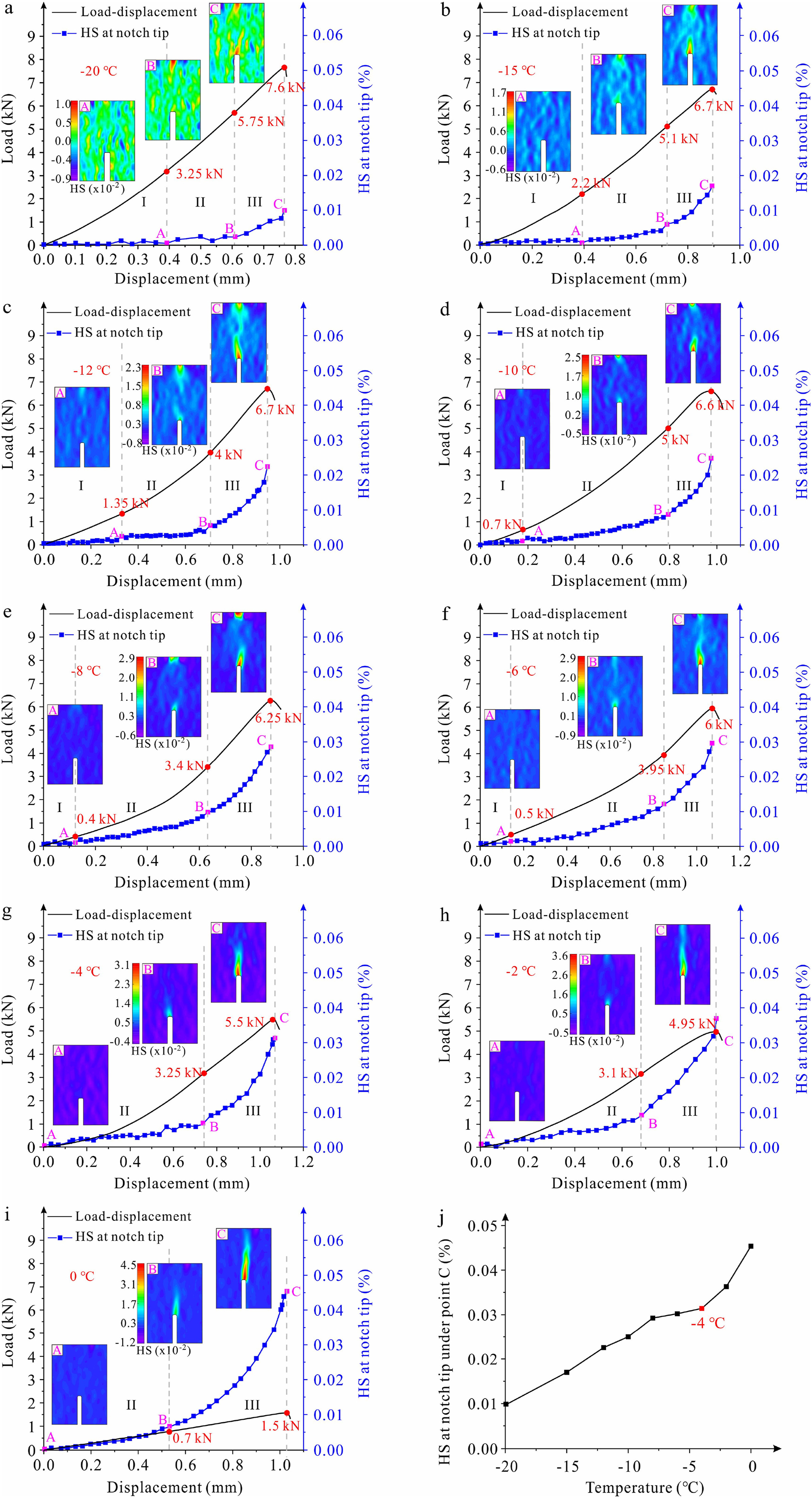JRMGE / Vol 16 / Issue 3
Effects of thawing-induced softening on fracture behaviors of frozen rock
Ting Wang, Hailiang Jia, Qiang Sun, Xianjun Tan, Liyun Tang
Show More
a College of Geology and Environment, Xi’an University of Science and Technology, Xi’an, 710054, China
b College of Architecture and Civil Engineering, Xi’an University of Science and Technology, Xi’an, 710054, China
c State Key Laboratory of Geomechanics and Geotechnical Engineering, Institute of Rock and Soil Mechanics, Chinese Academy of Sciences, Wuhan, 430064, China
2024, 16(3): 979-989. doi:10.1016/j.jrmge.2023.07.016
Received: 2023-01-12 / Revised: 2023-05-26 / Accepted: 2023-07-09 / Available online: 2023-10-04
2024, 16(3): 979-989.
doi:10.1016/j.jrmge.2023.07.016
Received: 2023-01-12
Revised: 2023-05-26
Accepted: 2023-07-09
Available online: 2023-10-04
Due to the presence of ice and unfrozen water in pores of frozen rock, the rock fracture behaviors are susceptible to temperature. In this study, the potential thawing-induced softening effects on the fracture behaviors of frozen rock is evaluated by testing the tension fracture toughness (KIC) of frozen rock at different temperatures (i.e. −20 °C, −15 °C, −12 °C, −10 °C, −8 °C, −6 °C, −4 °C, −2 °C, and 0 °C). Acoustic emission (AE) and digital image correlation (DIC) methods are utilized to analyze the microcrack propagation during fracturing. The melting of pore ice is measured using nuclear magnetic resonance (NMR) method. The results indicate that: (1) The KIC of frozen rock decreases moderately between −20 °C and −4 °C, and rapidly between −4 °C and 0 °C. (2) At −20 °C to −4 °C, the fracturing process, deduced from the DIC results at the notch tip, exhibits three stages: elastic deformation, microcrack propagation and microcrack coalescence. However, at −4 °C–0 °C, only the latter two stages are observed. (3) At −4 °C–0 °C, the AE activities during fracturing are less than that at −20 °C to −4 °C, while more small events are reported. (4) The NMR results demonstrate a reverse variation trend in pore ice content with increasing temperature, that is, a moderate decrease is followed by a sharp decrease and −4 °C is exactly the critical temperature. Next, we interpret the thawing-induced softening effect by linking the evolution in microscopic structure of frozen rock with its macroscopic fracture behaviors as follow: from −20 °C to −4 °C, the thickening of the unfrozen water film diminishes the cementation strength between ice and rock skeleton, leading to the decrease in fracture parameters. From −4 °C to 0 °C, the cementation effect of ice almost vanishes, and the filling effect of pore ice is reduced significantly, which facilitates microcrack propagation and thus the easier fracture of frozen rocks.
Keywords: Frozen sandstone, Different thawing temperature, Fracture toughness, Microcrack propagation process, Unfrozen water content
Article Data
Author(s) Information
Ting Wang

Dr. Ting Wang has received her PhD in Geological Engineering from Xi'an University of Science and Technology, China in 2023. She is currently a lecturer at Shaanxi University of Technology. She investigates the physical and mechanical behaviours of frozen rock and reveals the influence mechanisms of freezing temperature and moisture content by linking the evolution in microscopic structure of frozen rock with its mechanical properties. She has published eight high-quality research papers in leading international journals. Furthermore, she obtained the First Prize of Outstanding Paper in the 5th International Symposium on Transportation Soil Engineering in Cold Regions (TRANSOILCOLD2021) in 2021 and the Excellent Graduation Design (Thesis) Award of the Chinese Society for Rock Mechanics & Engineering in 2017.

